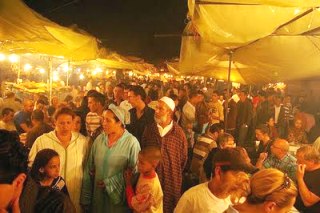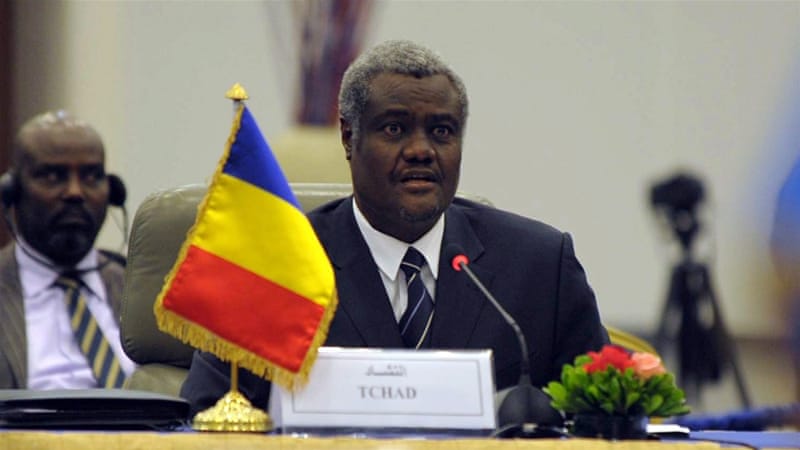 Recalling Ramadan traditions in his hometown of Marrakech, Morocco, Abdessamad Ali’s memories are very specific.
Recalling Ramadan traditions in his hometown of Marrakech, Morocco, Abdessamad Ali’s memories are very specific.
Ali recalls Harira, the special soup served to break the fast, his mother waking before the rest of the family to prepareSuhoor meal, the cannons which signaled the fasting masses that it was time to quench their thirst.
He also recalls the Nefar, a local man who would walk the streets of his neighborhood blowing his trumpet to herald the start and the end of Ramadan.
Though many of these Ramadan rituals are still alive in Morocco, some, like the Nefar, have nearly disappeared with the passing of time, particularly in bigger cities like Marrakech.
“It’s really sad to see those traditions go away,” said Ali, who has lived in the United States since 1999. “But Ramadan is still special because you feel it.”
For those who remember the Nefarswith their long, skinny horns, the sound of the trumpet serves as just another engagement of the senses, of sights, sounds, and tastes that are linked with their memories of Ramadan. Meanwhile, in some other places, the ritual continues.
“It’s an amazing tradition in small cities,” said Kat Fadaouri, who hails from Agadir, Morocco, but now makes her home in London.
Jennifer Wickens, a Canadian Muslim who lived in the city of Mimlal for a year in 2008, never heard the blast of the Nefar’s trumpet, but she fondly recalls drummers roaming the streets during the early morning darkness before the fast began, tapping their drums to rouse people out of bed.
“The night drummer would come through the streets about two hours or so before it was time to begin the fast,” she said.
“It was to wake you up so you could warm the food and sit together to eat it. The rhythm was beautiful! The drummer would weave in and around the small streets making the sound echo of the houses. The tradition of drumming was usually passed down from father to son. It has been going on forever and still continues today.” She recalled.
Traditional foods of Ramadan
As Ramadan is the month of fasting, traditions naturally take root in what people eat when they sit down to break their fasts. However, what people choose to prepare during this holy month can vary from home to home.
Many people eat chicken or some other types of meat served with vegetables, cooked the night before and heated in the morning for quick preparation. Others choose a simple meal of bread with butter and coffee. Some prefer Moroccan Msemen, a type of pancake folded into a square shape before being fried in a pan and then drizzled with honey.
Still others eat Beghrir, a crepe-style pancake that when drizzled with butter and paired with sweet Moroccan mint tea, is enough to ease anyone into the long food-free day ahead.
Moroccan women often wake before dawn to prepare Suhoor and then rouse their slumbering families when it’s time to eat.
Ait Ali said he remembers his mother making herSuhoor preparations the night before.
“My mother would buy a lot of chicken and put them on the grill to cook overnight,” he said.
“Then she would wake us up, we’d eat the food and have tea and bread then we’d go back to sleep.”
Perhaps even more than Suhoor, Iftar is essential for Ramadan traditions.
Alerted by the blasts of the cannons or the wail of the sirens that tell of the time to break the fast, most Moroccans sit down to a traditional meal of dates, milk and water; but it is the Harira, a distinctly Moroccan soup of lentils, tomatoes and chickpeas that serves as the centerpiece of the Iftar menu.
The ritual of serving Harira is so prevalent in Morocco that it is served in nearly 90 percent of the North African country’s homes during Ramadan.
The light and healthy soup is the perfect food to fill a shrunken and delicate stomach after a full day of fasting, particularly during the long days of summer.
Boiled eggs, served with a side of cumin, often find a place beside the Harira on Iftar table. Smoothies, usually avocado mixed with milk, sugar, dates and almonds, or freshly squeezed orange juice; quench a long-denied thirst. Though they are most popular in the early morning, Msemen and Beghrir are often eaten at day’s end as well.
Of course prayer is an important part of the spiritual focus of Ramadan and, just like theirHarira, Moroccans take it seriously.
In fact, many would delay eating theHarira and Iftarmeals, only eating some dates and water and perhaps coffee, before heading to the mosque for Mahgriband then Taraweeh prayers.
Ali said it’s often hard to fill his stomach after fasting all day and would make prayer uncomfortable.
“It’s hard to bend (in Ruku) if you’ve eaten too much and your stomach hurts,” he said.
It is only after spending that time in prayer and Qur’an recitation that many Moroccans head home and eat a large amount of food, often enjoying meals and visiting with family and friends until the early morning hours.
But no matter how long they stay awake eating, drinking and making merry, they can be assured of a trumpeter, a drummer or even a steadfast mother waking them in a few hours to eat again and begin another day of fasting.
By Carissa D. Lamkahouan
Freelance Writer, USA




